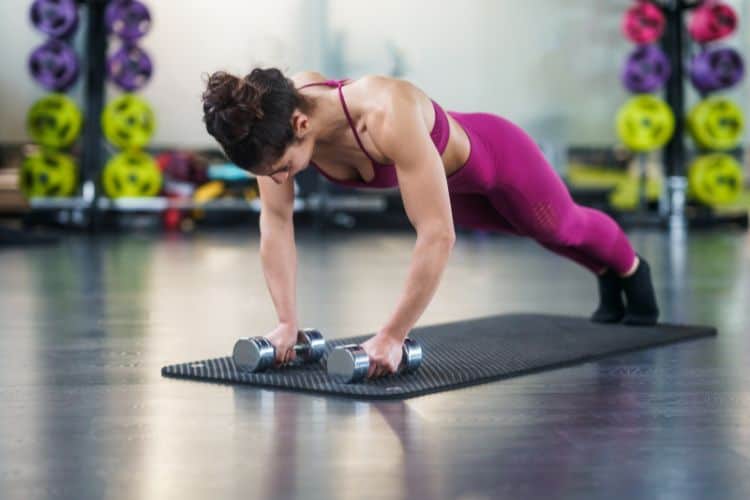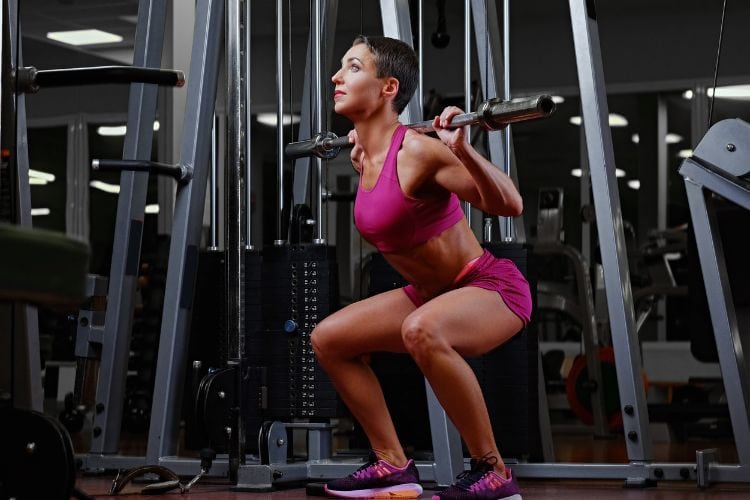Sign up for workout ideas, training advice, reviews of the latest gear and more.






Aging is inevitable, but losing strength, mobility, and confidence doesn’t have to be. For women over 50, strength training isn’t just about building muscle—it’s about maintaining independence, boosting metabolism, protecting bone density, and enhancing overall quality of life. This comprehensive strength training program for women over 50 offers guidance, structure, and motivation to help you feel strong, empowered, and vibrant at any age.
As women age, especially after menopause, bone density naturally declines, increasing the risk of osteoporosis and fractures. Strength training places stress on bones in a controlled way, helping to preserve and even improve bone density.
After 50, muscle mass can decrease by 1–2% each year. Strength training counters this muscle loss, supporting functional strength and preventing age-related weakness.
Muscle burns more calories at rest than fat. Regular resistance training can rev up your metabolism, making it easier to manage your weight and improve body composition.
Strength training enhances joint stability, posture, and coordination, reducing the risk of falls and improving day-to-day movement.
Studies show strength training can improve mood, decrease anxiety and depression, and boost self-esteem, especially in older adults.
Before starting any new workout program, especially if you have existing health conditions or have been sedentary, consult your doctor to ensure it’s safe.
If you’re new to strength training, begin with light weights or bodyweight exercises. Prioritize proper form over heavy lifting to avoid injury.
Every session should begin with a 5–10 minute warm-up. Try dynamic movements like arm circles, leg swings, or light cardio to prepare your joints and muscles.
Here’s a simple, effective weekly strength training plan:
Each workout can be completed in 30–45 minutes and adapted for home or gym settings.
This workout targets all major muscle groups using bodyweight or light dumbbells.
Focus on gentle hamstring, shoulder, and lower back stretches.
A targeted routine to build arm, back, and core strength.
Stretch arms, shoulders, and obliques.
Strengthen legs and improve stability with these exercises.
Include stretches for hamstrings, quads, and calves.
You don’t need a gym to get started. These items are budget-friendly and suitable for beginners:
Over time, you can add heavier weights, ankle weights, or kettlebells as your strength increases.
Increase weight or repetitions every few weeks to keep challenging your muscles and avoid plateaus.
Discomfort is normal, especially when starting, but pain is not. Modify exercises if needed and allow time for recovery.
Strength training 2–3 times per week yields the best results. Pair with healthy nutrition and adequate sleep.
At this stage in life, rest is just as important as training. Ensure rest days are part of your plan to allow your body to rebuild stronger.
Exercises that use multiple joints and muscles (e.g., squats, rows, presses) are more effective than isolation exercises for overall strength and function.
When done correctly with good form and moderate weights, strength training is safe and even recommended for older adults by health organizations like the CDC and ACSM.
Women over 50 don’t produce enough testosterone to gain large muscle mass. Instead, you’ll gain strength, tone, and improved metabolism.
While walking and cycling are great for heart health, only resistance training can preserve muscle and bone mass effectively as you age.
Here’s a beginner-friendly schedule to help you get started and stay on track.
Always finish each workout with gentle stretching and deep breathing.
Women over 50 need more protein to support muscle repair. Aim for 20–30 grams per meal from sources like lean meats, eggs, legumes, or protein shakes.
Dehydration can lead to fatigue and cramps. Drink water throughout the day, especially around your workouts.
These nutrients are crucial for bone health. Include dairy, leafy greens, and fortified foods, or talk to your doctor about supplements.
Whole grains and healthy fats (like avocados, nuts, olive oil) provide energy and support hormonal balance.
Keep a strength training journal to record:
Celebrating small wins—like holding a plank 10 seconds longer or increasing your dumbbell weight—helps boost motivation.
If you experience joint pain, dizziness, or aren’t seeing progress after several weeks, consult a physical therapist or certified personal trainer specializing in older adults. They can tailor a program to your specific needs and limitations.
Strength training isn’t just for the young—it’s a lifelong tool to build resilience, health, and confidence. For women over 50, it’s one of the most impactful ways to reclaim vitality, reduce injury risk, and feel strong in your own skin.
Start where you are. Use what you have. Do what you can. Strength is earned one rep at a time, and you are more than capable of rising to the challenge.
Want more workout and video guide?
Follow us on Pinterest, Facebook, and Subscribe to our Newsletter and Stay tuned for FREE downloads of our App coming soon!
Stay up to date on the latest women’s health, fitness and lifestyle trends and tips.